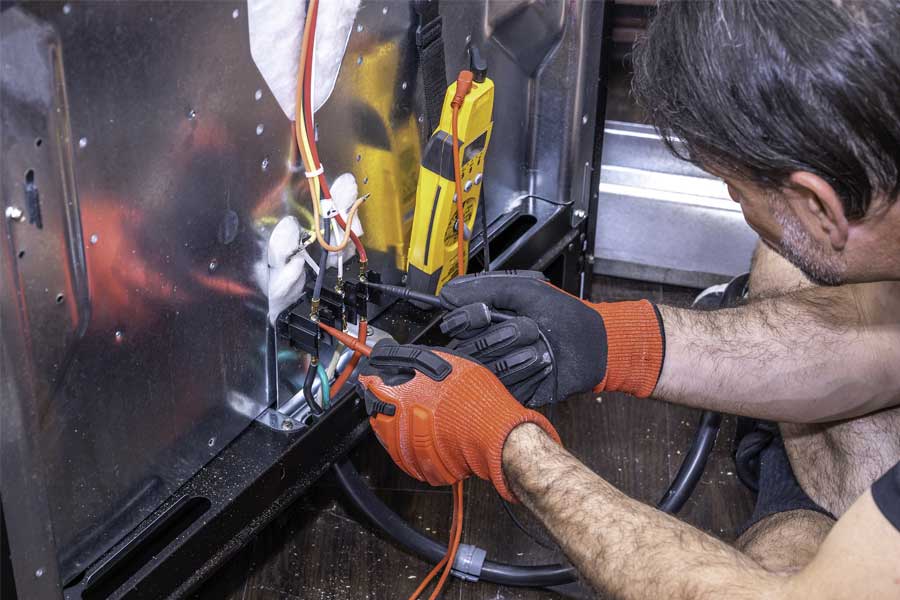At Savacool Electric, we understand that dealing with electrical problems can be frustrating and sometimes even a bit daunting. Whether it’s a flickering light, a tripping circuit breaker, or a dead outlet, common electrical issues can disrupt your daily life. We’re here to help you troubleshoot these problems safely and effectively. In this guide, we’ll walk you through some of the most common electrical issues and provide step-by-step solutions to address them.
Understanding Electrical Safety Basics
Before diving into troubleshooting, it’s crucial to prioritize safety. Always turn off the power at the circuit breaker before working on any electrical components. Use insulated tools and wear rubber-soled shoes to minimize the risk of electric shock. If you’re ever unsure or uncomfortable handling an electrical issue, it’s best to call a professional electrician.
Tools You’ll Need for Electrical Troubleshooting
Having the right tools can make troubleshooting much easier. Here are some essential tools you’ll need:
- Voltage tester or multimeter
- Screwdrivers (flathead and Phillips)
- Wire strippers
- Pliers
- Electrical tape
- Flashlight
Common Electrical Problems
Flickering Lights
Flickering lights can be annoying and are often a sign of an underlying issue. Here’s how to troubleshoot this problem:
- Possible Causes: Loose bulbs, faulty light switches, or issues with the electrical panel.
- Step-by-Step Troubleshooting Guide:
- Check the Bulb: Ensure the bulb is screwed in tightly. Replace it with a new one if necessary.
- Inspect the Light Switch: Toggle the switch on and off to see if the flickering stops. If the switch feels loose, it might need to be replaced.
- Examine the Electrical Panel: If the flickering persists, it could be a problem with the circuit. Check the electrical panel for loose connections or tripped breakers.
Tripping Circuit Breakers
Circuit breakers are designed to protect your home from electrical overloads, but frequent tripping can indicate a problem.
- Understanding Circuit Overloads: Overloads occur when too many devices are connected to a single circuit, drawing more power than the circuit can handle.
- Step-by-Step Troubleshooting Guide:
- Identify the Circuit: Determine which circuit is tripping by labeling your breaker panel.
- Unplug Devices: Unplug all devices on the circuit and reset the breaker.
- Reconnect Devices: Plug devices back in one at a time to identify the culprit. If the breaker trips again, the last device connected may be faulty or drawing too much power.
- Check for Short Circuits: Inspect outlets and switches for signs of damage or burning, which could indicate a short circuit.
Dead Outlets
Dead outlets can be inconvenient and may signal a bigger electrical issue.
- Common Reasons for Dead Outlets: Tripped GFCI (Ground Fault Circuit Interrupter) outlets, loose connections, or a tripped circuit breaker.
- Step-by-Step Troubleshooting Guide:
- Test with a Voltage Tester: Verify that the outlet is truly dead by using a voltage tester.
- Check the Breaker Panel: Ensure the circuit breaker hasn’t tripped.
- Reset GFCI Outlets: If the dead outlet is in a kitchen, bathroom, or outdoor area, it might be connected to a GFCI outlet. Press the reset button on the GFCI outlet.
- Inspect for Loose Connections: Turn off the power and remove the outlet cover to check for loose wires.
Frequent Light Bulb Burnouts
If light bulbs burn out frequently, it might be more than just bad luck.
- Potential Causes: High voltage, poor air circulation around the bulb, or incompatible bulb wattage.
- Step-by-Step Troubleshooting Guide:
- Check Bulb Wattage: Ensure you’re using the correct wattage for your light fixtures.
- Inspect for High Voltage: Use a multimeter to check if your home’s voltage is higher than the standard 120 volts.
- Improve Air Circulation: Make sure the light fixture allows for proper air circulation to prevent overheating.
When to Call a Professional Electrician
While DIY troubleshooting can resolve many common electrical issues, some problems require professional expertise. Call an electrician if you:
- Experience frequent breaker trips without an apparent cause
- Notice burning smells or scorch marks around outlets
- Encounter sparking or buzzing from electrical components
- Are unsure about any electrical repairs or troubleshooting steps
Preventative Measures to Avoid Electrical Issues
Preventative maintenance can help you avoid many common electrical problems. Here are some tips:
- Regular Inspections: Schedule annual electrical inspections to identify and address potential issues.
- Proper Usage: Avoid overloading circuits and use appliances as intended.
- Upgrade Old Wiring: If your home has outdated wiring, consider upgrading to meet current safety standards.
Professional Electricians
At Savacool Electric, we pride ourselves on our expertise and dedication to providing top-notch electrical services. Our team of skilled electricians is trained to handle a wide range of electrical issues, ensuring your home’s safety and efficiency. Whether you need a quick fix or a comprehensive electrical inspection, we’re here to help.
Troubleshooting common electrical issues can save you time and money while ensuring your home remains safe and functional. Remember to prioritize safety, use the right tools, and know when to call in the professionals. At Savacool Electric, we’re committed to helping you maintain a safe and efficient home. Contact us today for all your electrical needs.






